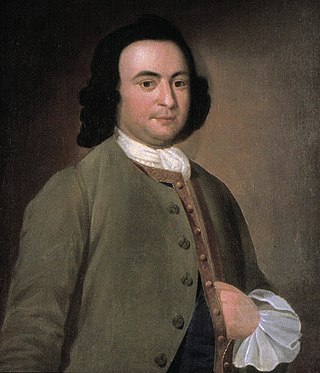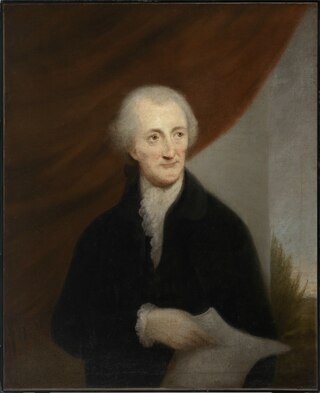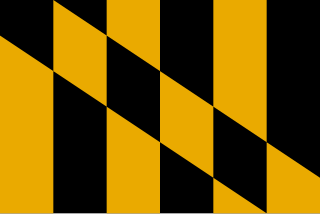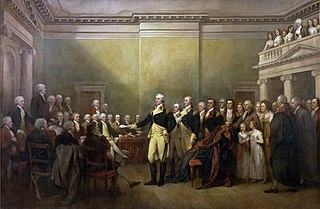Related Research Articles

George Mason was an American planter, politician, Founding Father, and delegate to the U.S. Constitutional Convention of 1787, one of three delegates present who refused to sign the Constitution. His writings, including substantial portions of the Fairfax Resolves of 1774, the Virginia Declaration of Rights of 1776, and his Objections to this Constitution of Government (1787) opposing ratification, have exercised a significant influence on American political thought and events. The Virginia Declaration of Rights, which Mason principally authored, served as a basis for the United States Bill of Rights, of which he has been deemed the father.

George Read was an American politician from New Castle in New Castle County, Delaware. He was a Continental Congressman from Delaware, a delegate to the U.S. Constitutional Convention of 1787, president of Delaware, and a member of the Federalist Party. In addition, Read served as U.S. Senator from Delaware and chief justice of Delaware.

The Annapolis Convention was an Assembly of the Counties of Maryland that functioned as the colony's provincial government from 1774 to 1776 during the early days leading up to the American Revolution. After 1775, it was officially named the Assembly of Freemen.

Matthew Tilghman was an American planter, and Revolutionary leader from Maryland. He served as a delegate to the Continental Congress from 1774 to 1776, where he signed the 1774 Continental Association.

The Maryland House of Delegates is the lower house of the legislature of the State of Maryland. It consists of 141 delegates elected from 47 districts. The House of Delegates Chamber is in the Maryland State House on State Circle in Annapolis, the state capital. The State House also houses the Maryland State Senate Chamber and the offices of the Governor and Lieutenant Governor of the State of Maryland. Each delegate has offices in Annapolis, in the nearby Casper R. Taylor Jr. House Office Building.

The Maryland Senate, sometimes referred to as the Maryland State Senate, is the upper house of the General Assembly, the state legislature of the U.S. state of Maryland. Composed of 47 senators elected from an equal number of constituent single-member districts, the Senate is responsible, along with the Maryland House of Delegates, for passage of laws in Maryland, and for confirming executive appointments made by the Governor of Maryland.

James Black Groome, a member of the United States Democratic Party, was the 36th Governor of Maryland in the United States from 1874 to 1876. He was also a member of the United States Senate, representing Maryland, from 1879–1885.
William Churchill Houston, a Founding Father of the United States, was a teacher, lawyer and statesman. Houston served as a delegate representing New Jersey in both the Continental Congress and Constitutional Convention. He was elected to the American Philosophical Society in 1780.

The Maryland Constitution of 1776 was the first of four constitutions under which the U.S. state of Maryland has been governed. It was that state's basic law from its adoption in 1776 until the Maryland Constitution of 1851 took effect on July 4 of that year.
Stephen Trigg was an American pioneer and soldier from Virginia. He was killed ten months after the surrender of Cornwallis at Yorktown in one of the last battles of the American Revolution while leading the Lincoln County militia at the Battle of Blue Licks, Kentucky.
Upton Sheredine was an American jurist and statesman from Baltimore, Maryland. He represented Maryland at both the state and national level, and was a judge in several courts.

Jackson Morton was an American politician. A member of the Whig Party, he represented Florida as a U.S. Senator from 1849 to 1855. He also served as a Deputy from Florida to the Provisional Congress of the Confederate States from 1861 to 1862.

Anne R. Kaiser is an American politician from the state of Maryland who serves in the Maryland House of Delegates, where she represents the 14th district, which includes parts of Silver Spring, Calverton, Colesville, Cloverly, Fairland, Burtonsville, Spencerville, Olney, Brookeville, Ashton-Sandy Spring, Brinklow, Laytonsville, Sunshine, Goshen, and Damascus in Montgomery County.
John Stevenson, a Scot, pioneer merchant and developer of Baltimore, Maryland, if not indeed its actual founder, was known as the "American Romulus." Records indicate that John Stevenson and his brother, Henry, also a doctor came to British North America from Ireland in 1734. On November 13, 1735, Stevenson married Mary Tipton; she died December 6, 1736.

Then Province of Maryland had been a British / English colony since 1632, when Sir George Calvert, first Baron of Baltimore and Lord Baltimore (1579-1632), received a charter and grant from King Charles I of England and first created a haven for English Roman Catholics in the New World, with his son, Cecilius Calvert (1605-1675), the second Lord Baltimore equipping and sending over the first colonists to the Chesapeake Bay region in March 1634. The first signs of rebellion against the mother country occurred in 1765, when the tax collector Zachariah Hood was injured while landing at the second provincial capital of Annapolis docks, arguably the first violent resistance to British taxation in the colonies. After a decade of bitter argument and internal discord, Maryland declared itself a sovereign state in 1776. The province was one of the Thirteen Colonies of British America to declare independence from Great Britain and joined the others in signing a collective Declaration of Independence that summer in the Second Continental Congress in nearby Philadelphia. Samuel Chase, William Paca, Thomas Stone, and Charles Carroll of Carrollton signed on Maryland's behalf.

The California Constitutional Conventions were two separate constitutional conventions that took place in California during the nineteenth century which led to the creation of the modern Constitution of California. The first, known as the 1849 Constitutional Convention of Monterey, held in September and October 1849 in advance of California attaining U.S. statehood the following year, adopted the state's original constitution. This document maintains jurisdiction along with the current constitution which was ratified on May 7, 1879, following the 1879 Constitutional Convention of Sacramento. Article 3 Section 2 of the current Constitution references the original boundaries as stated in the 1849 Constitution at Article 12. The result of Progressive mistrust of elected officials, this later constitution took a full year to finalize and has been described as "the perfect example of what a constitution ought not to be". Multiple calls for a third state constitutional convention have been raised during the past quarter-century, but none has thus far gained widespread political momentum.

The Virginia Constitutional Convention of 1829–1830 was a constitutional convention for the state of Virginia, held in Richmond from October 5, 1829 to January 15, 1830.
Helen L. Koss was a member of the Maryland House of Delegates for District 18 and 19, representing Silver Spring, Maryland for sixteen years.

The North Carolina Constitutional Convention of 1835 was a meeting of delegates elected by eligible voters in counties in the United States state of North Carolina to amend the Constitution of North Carolina written in 1776 by the Fifth North Carolina Provincial Congress. They met in Raleigh, North Carolina from June 4, 1835, to July 11, 1835, and approved several amendments to the constitution that were voted on and approved by the voters of North Carolina on November 9, 1835. These amendments improved the representation of the more populous counties in the Piedmont and western regions of the state and, for the first time, provided for the election of the governor by popular vote rather than election by the members of the General Assembly.

Hong Qi is an American politician who represents the 15th legislative district in the Maryland House of Delegates. Qi previously worked as a chief administrator for economic development under Isiah Leggett.
References
- ↑
- Historical List: Constitutional Convention, 1776". Archives of Maryland.
- ↑ Boyd, T.H.S. (1879). The History of Montgomery County, Maryland from Its Earliest Settlement in 1650 to 1879. Clarksburg, Maryland: Regional Publishing Company. p. 54. ISBN 0-8063-7954-5.